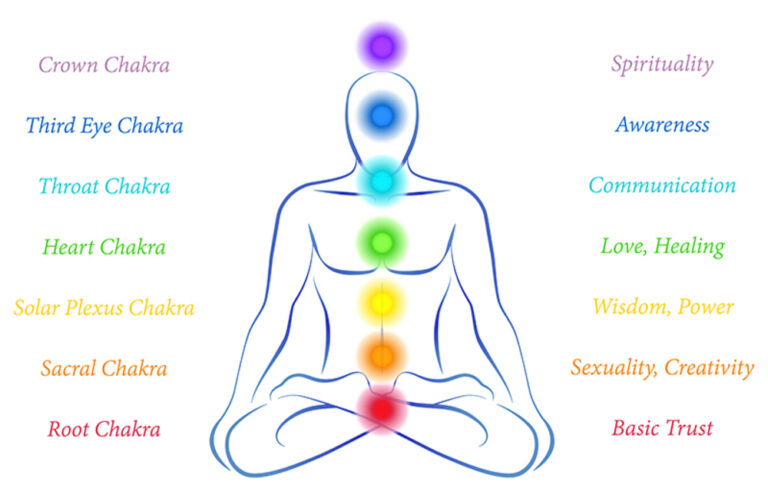Can We Meditate with Music? The Scientific Debate
Can We Meditate with Music? Integrating meditation and music has sparked a profound scientific debate in the quest for inner peace and mindfulness. Meditation, an ancient practice celebrated for its myriad benefits on mental well-being, has often been pursued in silence to achieve a state of deep concentration and self-awareness. However, the emergence of meditative music has led to divergent opinions within the scientific community regarding its compatibility with traditional meditative practices.
This article aims to unravel the intricacies of the ongoing scientific debate surrounding the fusion of meditation and music. As we delve into the subject, we will explore contrasting viewpoints, dissect research findings, and examine the potential implications for individuals seeking solace through the harmonious blend of meditation and music. Can these two realms coexist, enhancing the meditative experience, or do they stand at odds? Let us navigate the nuanced landscape where ancient wisdom meets modern scientific inquiry, seeking to understand the true harmony, if any, that exists between meditation and music.
The Role of Music in Meditation
As we navigate the intricate landscape of the relationship between meditation and music, a pivotal aspect that demands scrutiny is music’s role in the meditative experience. Traditional meditation practices often emphasize silence as a conduit for inner reflection, concentration, and mindfulness. The introduction of music into this sacred space has sparked a controversy that resonates through the corridors of ancient wisdom and modern scientific inquiry.
On one side of the spectrum, proponents argue that carefully curated meditative music can enhance meditation by providing a soothing backdrop that facilitates relaxation and focus. Advocates contend that when chosen mindfully, music can catalyze heightened states of consciousness, guiding individuals on self-discovery and tranquility.
Conversely, skeptics question the compatibility of music with the core principles of meditation. They argue that introducing external auditory stimuli may divert attention, hindering the practitioner’s ability to achieve the deep levels of concentration associated with traditional meditation. The debate extends beyond personal preference, delving into the essence of meditative practices and their objectives.
Exploring the controversy, we will delve into scientific studies, philosophical perspectives, and anecdotal evidence to shed light on the multifaceted relationship between music and meditation. By scrutinizing the arguments on both sides, we aim to uncover whether music can truly complement the meditative journey or if its inclusion poses a potential divergence from the essence of this ancient practice.

Understanding the Effectiveness of Traditional Silent Meditation Techniques
Traditional silent meditation techniques have stood the test of time in pursuing mindfulness and self-discovery as venerable pathways to inner tranquility. Rooted in ancient wisdom and practiced across diverse cultures, silent meditation fosters mental clarity, emotional balance, and a profound connection with the present moment.
Exploring Timeless Wisdom: Traditional Silent Meditation Techniques
Traditional silent meditation techniques have proven to be steadfast guides in the timeless pursuit of mindfulness and self-discovery. Rooted in ancient wisdom and embraced across diverse cultures, these techniques serve as venerable pathways to inner tranquility.
The Essence of Stillness: Core Principles of Silent Meditation
At its core, silent meditation encourages practitioners to turn inward, detaching from external stimuli to delve into the recesses of their consciousness. The fundamental premise lies in cultivating mindfulness and heightened awareness by disengaging from the constant chatter of the external world.
Scientific Validation: Efficacy of Silent Meditation
Scientific research underscores the effectiveness of traditional silent meditation techniques in promoting various aspects of mental well-being. Studies suggest that regular practice can lead to reduced stress levels, improved concentration, and even structural changes in the brain associated with enhanced emotional regulation.
Silent Spaces: Unraveling the Mind in Absence of Auditory Stimuli
The absence of external auditory stimuli in silent meditation provides a unique opportunity for individuals to develop a profound connection with their thoughts and emotions. In silence, the mind can unravel its complexities, allowing practitioners to observe and understand their thoughts without judgment.
Inner Journey: Navigating the Terrain of Consciousness
As we explore the effectiveness of traditional silent meditation techniques, we must appreciate the symbiotic relationship between stillness and self-discovery. The practice invites individuals to embark on an inward journey, navigating the terrain of their consciousness to achieve a harmonious balance between mind, body, and spirit.
The Anecdotal Evidence: Benefits and Drawbacks of Meditating with Music
In the ongoing dialogue about integrating music into the meditative experience, anecdotal evidence significantly shapes perspectives. Individuals who have explored the union of meditation and music often share personal accounts that shed light on the benefits and drawbacks of this amalgamation.
Harmony and Tranquility
Proponents of meditating with music often recount experiences of enhanced tranquility and deepened states of relaxation. The harmonious interplay of melodies can create a conducive environment for meditation, offering a gentle guide for the mind to focus and unwind. Many practitioners attest to increased emotional well-being and a more accessible entry into meditative states when accompanied by carefully selected music.
Distractions and Dissonance
Conversely, sceptics and those who have faced challenges in meditating with music share anecdotes of distractions and dissonance. The introduction of auditory stimuli, even if intended to be soothing, may, for some, disrupt the delicate balance required for focused meditation. The potential for the mind to wander or fixate on the musical elements rather than internal contemplation becomes a noteworthy drawback in the eyes of critics.
Personal Preferences
The landscape of anecdotal evidence is inherently diverse, reflecting the individualized nature of meditation experiences. Personal preferences, musical inclinations, and the specific goals of meditation contribute to the varied spectrum of anecdotes. Understanding that what works seamlessly for one practitioner may present challenges for another underscores the need for a nuanced approach to evaluating the intersection of meditation and music.
Navigating the Subjective
As we delve into the realm of anecdotal evidence, navigating the subjective nature of personal accounts becomes essential. While these narratives provide valuable insights, they also highlight the need for a comprehensive scientific examination. In the following sections, we will bridge the anecdotal with the empirical, exploring how individual experiences intersect with broader scientific perspectives on the benefits and drawbacks of meditating with music.
Scientific Studies on the Impact of Music on Meditation: Separating Fact from Fiction
In the pursuit of understanding the intricate relationship between music and meditation, scientific studies serve as critical compass points, guiding us through a labyrinth of perspectives. These empirical investigations delve into the impact of music on meditation, aiming to disentangle fact from fiction and provide evidence-based insights into the efficacy of combining these two realms.
Cognitive Harmony: Unraveling the Neural Impact
Researchers exploring the impact of music on meditation have delved into the cognitive harmony that may arise from this union. Studies suggest that carefully chosen musical compositions can synchronize with neural patterns associated with relaxation and concentration. The interplay between music and the brain’s cognitive processes is a focal point, with findings indicating potential enhancements in mood and mental clarity for individuals who engage in meditative practices accompanied by music.
Divergence in Attention: Challenges to Meditative Focus
Conversely, scientific inquiries have unearthed challenges tied to the potential divergence of attention when music is introduced into meditation. Research indicates that certain types of music may disrupt the natural flow of meditative focus, leading to increased cognitive load and diminished benefits. Understanding the nuances of musical genres, tempo, and individual preferences becomes paramount in deciphering the impact on meditation outcomes.
Individual Variances: A Key Consideration in Research Findings
Scientific studies underscore the significance of individual variances in responding to music during meditation. Factors such as personal musical preferences, cultural backgrounds, and prior experiences shape the outcomes of these studies. Acknowledging the diversity in participant responses becomes crucial in constructing a comprehensive understanding of the intricate interplay between music and meditation.
Holistic Perspectives: Integrating Qualitative and Quantitative Data
Contemporary research often integrates qualitative and quantitative data to gain a holistic perspective. Beyond measuring physiological responses, studies may incorporate subjective experiences and self-reported benefits. This comprehensive approach aims to bridge the gap between the objective measurements of scientific inquiry and the nuanced, subjective nature of the meditative experience when accompanied by music.
The Road Ahead: Navigating the Intersection of Science and Meditation
As we sift through the scientific studies, it becomes apparent that the impact of music on meditation is a multifaceted terrain. The road ahead involves further exploration, refined methodologies, and a synthesis of findings to forge a more straightforward path through the scientific, considering both subjective experiences and potential shifts in emotional and cognitive states. Be open to adaptation, allowing your meditation approach to evolve in alignment with your changing needs and insights.
8. Professional Guidance
Seeking guidance from experienced meditation instructors or mental health professionals can provide valuable insights. Professionals can offer personalized advice based on your specific goals, helping you navigate the complexities of integrating music into your meditation practice.
9. Holisticacies
In the subsequent sections, we will synthesize these scientific perspectives with anecdotal evidence to understand the debate surrounding meditation and music comprehensively.

Revealing the Neuroscientific Insights: How Does Music Affect the Brain during Meditation?
In the intricate tapestry of meditation and music, the lens of neuroscience offers a fascinating perspective on the underlying mechanisms at play within the human brain. Delving into neuroscientific insights provides a deeper understanding of how music influences the neural landscape during meditation, unravelling the intricate dance between auditory stimuli and cognitive processes.
Harmony in the Brain: Synchronization with Music during Meditation
Neuroscientific studies suggest the brain exhibits a remarkable capacity for synchronization with musical stimuli during meditation. As individuals engage in meditative practices accompanied by music, neural oscillations may align with the auditory input’s rhythmic patterns and tonal qualities. This synchronization is theorized to contribute to a sense of harmony and coherence in the brain, potentially enhancing the meditative experience.
Emotional Resonance: The Limbic System’s Response to Meditative Music
The limbic system, responsible for processing emotions, emerges as a focal point in understanding the impact of music on meditation. Neuroscientific research indicates that certain types of meditative music can evoke emotional responses by engaging regions such as the amygdala and the hippocampus. This emotional resonance may contribute to the reported feelings of tranquillity and heightened states of awareness experienced by individuals practicing meditation with music.
Attentional Pathways: Navigating the Cognitive Effects
Examining the neurobiology of attention provides further insights into how music influences cognitive processes during meditation. Studies suggest that music can modulate attentional pathways, influencing the allocation of cognitive resources. While some individuals may experience enhanced focus, others might face challenges maintaining meditative concentration. Unravelling the interplay between music and attentional mechanisms sheds light on the diverse cognitive effects observed in practitioners.
Plasticity and Adaptation: Structural Changes in the Brain
Long-term engagement in meditative practices with music has been associated with neuroplastic changes in the brain. Neuroscientific studies propose that consistent exposure to specific musical elements may induce structural adaptations, particularly in regions linked to emotional regulation and self-awareness. Understanding these neuroplastic changes contributes to our comprehension of the enduring impact of music-infused meditation on the brain.
Interdisciplinary Dialogue: Bridging Neuroscience with Meditation Practices
As we unveil these neuroscientific insights, it becomes evident that the intersection of music and meditation is a rich and interdisciplinary domain. The dialogue between neuroscience and meditation practices continues to evolve, offering a platform for researchers, practitioners, and enthusiasts to deepen their understanding of the profound interplay between auditory stimuli, neural responses, and the transformative journey of meditation.
Considerations for Meditators: Personal Preference vs. Scientific Evidence
In meditation and music, practitioners often find themselves at the crossroads of personal preference and scientific evidence. As individuals embark on their meditative journeys, navigating the nuanced landscape of whether to incorporate music becomes a contemplative process, balancing subjective inclinations with empirical insights.
Personal Harmony: Nurturing Individual Preferences in Meditation
The subjective nature of meditation invites a celebration of personal harmony. For many practitioners, the choice to include music in their meditative practices is guided by an innate resonance with particular sounds, rhythms, or melodies. The reflective nature of meditation allows for a personalized approach, where individual preferences play a pivotal role in cultivating an environment conducive to inner exploration and tranquillity.
Scientific Foundations: Leveraging Research to Inform Practice
Amid the rich tapestry of personal preferences, the scientific foundations of meditation with music offer valuable guidance. Research studies provide insights into this amalgamation’s cognitive, emotional, and neural dimensions. By leveraging scientific evidence, practitioners gain a deeper understanding of the potential impacts of music on their meditative experiences, allowing for an informed and intentional integration of auditory stimuli into their practice.
Mindful Experimentation: Exploring What Works Best
The journey of incorporating music into meditation becomes an exercise in mindful experimentation. Practitioners are encouraged to explore different genres, tempos, and styles, noting the nuances in their experiences. This experimental approach, grounded in self-awareness, allows individuals to discern what resonates most harmoniously with their unique meditative goals and preferences.
Balancing Distraction and Enhancement: The Dual Nature of Music
As meditators tread the path of personalization, they encounter the dual nature of music—simultaneously a potential source of distraction and a catalyst for enhancement. Striking a balance between these contrasting aspects requires a discerning awareness of how specific musical elements influence concentration, relaxation, and the overall quality of the meditative state.
Integrating Personal Insights: The Intersection of Preference and Practice
Ultimately, integrating personal insights becomes a dynamic process at the intersection of preference and practice. Meditators are encouraged to reflect on their experiences, acknowledging the subtle interplay between their chosen auditory accompaniment and the depth of their meditative states. This reflective practice allows for continuous refinement of the meditative approach, aligning personal preferences with the evolving understanding of the impact of music on the meditative journey.
Holistic Well-being: Embracing the Diversity of Meditative Practices
In the considerations for meditators, the overarching goal is holistic well-being. Whether one finds solace in the serenity of silence or the rhythmic embrace of music, the diversity of meditative practices reflects the kaleidoscope of human experiences. By honoring both personal preference and the insights gleaned from scientific inquiry, individuals can forge a path that resonates authentically with their unique journey toward mindfulness and inner peace.
The Way Forward: Recommendations for Meditating with or Without Music
As meditators navigate the labyrinth of choices between practising in silence or with music accompaniment, thoughtful recommendations can illuminate the path forward. Whether drawn to the tranquillity of quiet contemplation or the harmonies of musical resonance, the following guidelines offer a compass for individuals seeking a fulfilling and enriching meditative experience.
1. Self-Reflection and Intentions
Begin the journey by engaging in self-reflection. Clarify the intentions behind your meditation practice. Are you seeking deep concentration, emotional release, or a blend of both? Understanding your goals will inform whether incorporating music aligns with your meditative objectives.
2. Mindful Exploration of Music
For those inclined to explore meditation with music, approach the endeavour mindfully. Experiment with different genres, tempos, and styles. Pay attention to how each musical element influences your mental state. Allow yourself the freedom to curate a playlist that resonates with your unique preferences and enhances your meditative experience.
3. Establishing a Routine
Consistency is vital in meditation. Whether opting for silence or music, establish a routine that aligns with your lifestyle. A consistent practice nurtures familiarity, creating a sacred space for self-discovery and introspection.
4. Individualized Approach
Recognize that meditation is a highly individualized practice. What works seamlessly for one person may not resonate with another. Embrace the diversity of meditative preferences, allowing room for personalization in the choice to include music and meditation techniques.
5. Awareness of Distraction Dynamics
When meditating with music, cultivate an acute awareness of distraction dynamics. While music can enhance the meditative experience, it may also pose challenges to concentration. Strive for a delicate balance, choosing music that fosters focus without becoming a source of distraction.
6. Integration of Mindfulness Techniques
Whether practising in silence or with music, integrate mindfulness techniques to anchor your awareness to the present moment. Techniques such as focused breathing, body scans, or mantra repetition can complement both approaches, promoting a deeper connection with the essence of meditation.
7. Periodic Reflection and Adaptation
Periodically reflect on your meditative journey. Assess the impact of music on your practice and well-being as the Goal
Ultimately, whether you choose to meditate with or without music, keep holistic well-being at the forefront of your practice. Embrace the diversity of approaches within the expansive realm of meditation, allowing your journey to be a dynamic and enriching exploration of self-discovery, inner peace, and mindfulness.
Conclusion: Can We Meditate with Music?
In the intricate weave of meditation and music, our exploration uncovers a diverse spectrum of practices, each offering a unique avenue to mindfulness. Whether enveloped in the serene hush of silence or guided by the melodic rhythms of music, individuals are encouraged to honour personal inclinations. Scientific insights provide a foundation, yet the subjective nature of meditation invites a discerning approach, blending ancient wisdom with contemporary understanding.
As practitioners chart their course, mindful reflection, experimentation, and a holistic perspective become guiding principles. The journey toward inner peace and well-being unfolds in diverse ways, echoing the universal essence of meditation—an individualized path toward self-discovery and mindful living. May the richness of this exploration inspire practitioners to embrace the transformative power of meditation in their chosen, authentic way.







